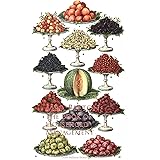Are you pondering what your kitchen will look like in the near future, perhaps in 2025? The kitchen, often considered the heart of the home, is continuously evolving, with each year bringing fresh perspectives on functionality, aesthetics, and sustainability. As was touched upon in the video above, the forthcoming trends are pointing towards a fascinating blend of practicality and sophisticated design.
For those embarking on a new build or a renovation project, understanding these emerging kitchen design trends 2025 can be incredibly insightful. The overarching theme that is observed involves creating spaces that are not only beautiful but also deeply personal, environmentally conscious, and effortlessly efficient. A thoughtful approach is being taken to integrate technology and nature, crafting kitchens that serve as true sanctuaries for culinary exploration and social connection.
1. The Art of Concealed Storage: A Seamless Aesthetic
One of the most prominent shifts being seen in kitchen design trends 2025 is the strong movement towards concealed storage. This concept is not merely about tidiness; rather, it is about creating a visual calm and a sleek, uninterrupted flow throughout the space. The aim is to eliminate visual clutter, allowing the architectural beauty and carefully chosen materials of the kitchen to take center stage.
Integrated Appliances for a Harmonious Look
Appliances are increasingly being designed to blend seamlessly into the cabinetry. Refrigerators, dishwashers, and even microwaves are being hidden behind custom panels that match the surrounding joinery. This creates a uniform facade, giving the impression of a sophisticated living area rather than a utilitarian workspace. It is much like a well-choreographed dance, where every element knows its place and moves in harmony without drawing undue attention.
Hidden Pantries and Clever Compartments
Beyond appliances, entire pantries are being concealed behind discreet doors, often with innovative pocket or bifold mechanisms. Pull-out drawers, spice racks, and utensil organizers are meticulously integrated, ensuring every item has a designated, out-of-sight home. This approach supports a minimalist aesthetic, where surfaces are kept clear, and a sense of spaciousness is actively maintained.
2. Embracing Earthy Tones: A Palette Rooted in Nature
The stark, all-white kitchen, while classic, is gracefully making room for a warmer, more inviting palette. Earthy tones are being celebrated for their ability to evoke a sense of calm, comfort, and connection to the natural world. These hues provide a grounding presence, transforming the kitchen into a cozy haven.
Shades of Serenity and Sophistication
Imagine kitchens adorned with rich sage greens, soft terracotta, warm off-whites, and deep charcoal greys. These colors are being chosen not just for cabinetry but also for countertops, backsplashes, and even kitchen islands. The effect is one of quiet luxury, reminiscent of a serene landscape where every element feels organically placed.
Layering Textures for Depth
When working with earthy tones, texture becomes incredibly important. Matte finishes are preferred over high-gloss, and natural materials like wood, stone, and clay are being incorporated to add tactile interest. This layering creates a dynamic space that feels both sophisticated and inherently natural, much like a forest floor with its varied textures and shades of brown and green.
3. Sustainable Materials: Design with a Conscience
Environmental consciousness continues to influence design choices, with sustainable materials taking a prominent role in . Consumers are increasingly valuing not just the aesthetic appeal but also the origin and impact of the materials used in their homes. This trend reflects a broader societal shift towards mindful living.
Reclaimed and Recycled for a Greener Footprint
Materials such as reclaimed wood, recycled glass countertops, and sustainably sourced bamboo are frequently being specified. Beyond the raw materials, consideration is also given to products with low volatile organic compound (VOC) finishes and those produced using ethical manufacturing processes. It is a commitment to building kitchens that are beautiful today and beneficial for tomorrow.
Long-lasting Quality and Timeless Appeal
A focus on sustainability also translates to choosing durable, high-quality materials that are built to last, reducing the need for frequent replacements. Investment in timeless design elements and robust construction ensures that these kitchens remain relevant and functional for many years. This approach is akin to planting a perennial garden, where beauty is enjoyed season after season without constant upkeep.
4. Smart Kitchen Technology: Integrated for Effortless Living
While the video highlighted aesthetic trends, the functional heart of modern kitchens is also undergoing a revolution. Smart technology is not about flashy gadgets but about seamless integration that simplifies daily tasks and enhances efficiency. These innovations are becoming an expected feature in contemporary kitchen designs.
Intuitive Automation and Connectivity
Appliances that can be controlled remotely, smart lighting systems that adapt to the time of day, and integrated charging stations for devices are commonplace. Refrigerators with inventory management, ovens that suggest recipes, and even smart faucets that dispense precise amounts of water are being woven into the fabric of the kitchen. The kitchen is being transformed into a responsive environment that anticipates needs.
Wellness and Convenience at the Forefront
Beyond cooking, smart kitchens are designed to support overall well-being. Air quality monitors, water filtration systems, and even vertical herb gardens with automated lighting are examples of how technology contributes to a healthier living space. This integration ensures that the kitchen operates not just as a place for food preparation but as a hub of comfort and efficiency.
5. Multi-functional Zones: Adapting to Modern Lifestyles
The traditional boundaries of the kitchen are increasingly being blurred, giving way to dynamic, multi-functional zones. As homes often serve multiple purposes, the kitchen is being designed to adapt, accommodating various activities beyond cooking.
Work, Dine, and Socialize
Large kitchen islands are no longer just for meal prep; they are being designed with integrated seating, charging points, and ample surface area to double as workstations or informal dining areas. Nooks are being created for quiet contemplation, reading, or even small home office setups. The kitchen is being reimagined as a versatile living space that caters to a diverse range of needs, much like a well-designed open-plan office that facilitates different work styles.
Fluidity and Flexibility in Design
Elements like movable islands, retractable doors that conceal workspaces, and modular furniture are allowing homeowners to reconfigure their kitchen layout as needed. This flexibility is crucial for adapting to evolving lifestyles, whether it involves entertaining guests, assisting children with homework, or pursuing personal hobbies. The emphasis is on creating a space that works harder and smarter for its occupants.
The kitchen design trends 2025 are shaping a future where our kitchens are not just functional spaces but integral parts of our holistic living experience. They are being designed to be beautiful, smart, sustainable, and deeply attuned to the rhythms of modern life.











